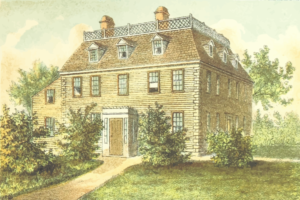 There are many reasons to fall in love with older homes. They often have incredible character and an inexplicable charm about them, whether it’s the custom cabinetry, original hardwood floors, wraparound deck or impressive stone work. You don’t often find the same care and attention to detail in modern construction methods. However, older homes tend to be riskier investments due to a higher possibility of pitfalls or inspection issues. Before you submit the offer, here’s a few tips to consider.
There are many reasons to fall in love with older homes. They often have incredible character and an inexplicable charm about them, whether it’s the custom cabinetry, original hardwood floors, wraparound deck or impressive stone work. You don’t often find the same care and attention to detail in modern construction methods. However, older homes tend to be riskier investments due to a higher possibility of pitfalls or inspection issues. Before you submit the offer, here’s a few tips to consider.
- Inspect, Inspect, Inspect: Depending on the age and level of maintenance, older homes often require more scrutiny when it comes to big ticket items, such as the foundation, roofing, plumbing, insulation, etc. It’s always in the buyer’s best interest to conduct a thorough inspection and consult the experts when issues arise to determine true conditions, for example, structural or electrical engineers, roof inspectors, or even insect infestation professionals. Other more severe concerns may include lead-based paint removal, mold or radon mitigation as opposed to needed updates for inefficient windows and outdated appliances.
- Consider Restrictions for Future Remodels/Expansions: Older homes could be subject to neighborhood or historical restrictions that would affect possible changes or upgrades to the home. If you plan to do any remodels or expansions, be sure to do your homework with neighborhood/HOA, local, city & county officials and make sure you’re within the guidelines. In addition, remodels & expansions can be costly, so you’ll need to consider these future expenses and budget accordingly.
- Get Multiple Quotes on Homeowner’s Insurance: Because older homes tend to be riskier investments, the cost to insure them can be higher than normal. Be sure to contact multiple insurance carriers to find the best deal.
So, if your dream is a Craftsman or a Victorian, go boldly into your search, but be prepared for the upkeep and updating that usually comes with the beauty of these homes and the curb appeal!

